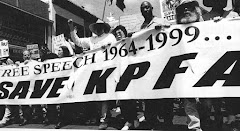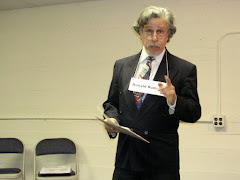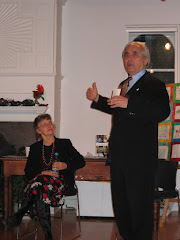Excerpts from Vanguard Press
feature story, April 29, 1980
By Greg Guma
Political rights are so easily
taken for granted – until they’re threatened or curtailed by repressive laws.
In the United States, they are usually most vulnerable when people are anxious
about some outside threat.
Today the threats to political
liberty are no less imminent.
The groundwork was actually laid
when a proposal for a massive rewrite of the US criminal code became the Nixon
administration’s blueprint for crushing dissent and savaging the Bill of
Rights. After Watergate and FBI-CIA revelations, proposed charters for the
intelligence community were exploited as springboards to legalize intrusive
techniques. Meanwhile, the Supreme Court moved toward prior restraint of free
speech.
Prior restraint of the press
became government policy in March 1979 when The Progressive magazine was
prevented from publishing an article on the H-bomb. The ban succeeded for six
months, on grounds that the 1954 Atomic Energy Act gave the government the
right to suppress nuclear knowledge. Although the case was eventually dropped,
the law may very well be used again.
Support from other publications
was slow in coming, possibly because the case involved a small Wisconsin
monthly rather than a daily giant like The New York Times’ publication of the
Pentagon Papers. The press gag ended only when other researchers found and
printed the same “secrets.”
Even though the government
dropped its case, it asserted that the section on violating national security
secrets in the Atomic Energy Act would continue to be enforced, one of several
“loaded pistols aimed at the First Amendment,” as writer Nat Hentoff put it.
In February 1980, the Supreme
Court ruled, in the case of ex-CIA agent Frank Snepp, that government agencies
have the right to restrict publication of national security information – even
if the material is unclassified – when the book or article has been produced by
a government worker with access to “confidential sources.”
The Court had effectively usurped
the lawmaking powers of Congress and gone a long way toward enacting an
American version of the British Official Secrets Act. In a letter to The New
York Times, Harvard Law Professor Alan Dershowitz, who was working with Ted
Kennedy at the time, said that an Official Secrets Act might not be needed
since “we have one now.”
The decision went further that
penalizing one CIA employee for breaking his contract. Any government worker in
a relationship of trust with his agency, whether or not a written agreement
exists, could have rights to speech diminished. The high court, with four Nixon
appointees in the majority, buttressed lower court decisions involving CIA
censorship of ex-agent Victor Marchetti. That case dealt with classified
material, and the Court set up a powerful precedent for prior restraint that
violated the public’s right to know.
In the 1950s and afterward, the
intelligence community saw itself in a war with those who supposedly threatened
the existing social order. Programs conducted in the heat of the Cold War
ranged from multi-million dollar covert actions worldwide – secret support for
pro-American political parties, destabilization of “unfriendly” regimes, arms
transfers, training and propaganda – to a wide range of domestic “counter-intelligence”
efforts.
Americans were shocked to learn that
the FBI, CIA, National Security Agency (NSA) and others had conducted massive
campaigns of spying and subversion directed at American citizens, most of whom
had never committed any crimes.
After the revelations of the
mid-1970s Congress moved toward defining a set of standards, to be codified in
several laws. But by the time the first of these, the Foreign Intelligence
Surveillance Act (FISA) was passed in 1978, the mood had already changed. There
was little objection when CIA Director Stansfield Turner nullified regulations
banning the use of journalists, academics and the clergy in intelligence work.
As pressures for action in the
Middle East mounted, President Carter asked for a freer rein in initiating
programs (the CIA was already supplying arms to rebels in Afghanistan,
according to several sources). Carter also wanted less public access to CIA
information. One proposal was to bar US citizens from obtaining information
about any program that didn’t directly involve the individual.
Critics of this exemption to the
Freedom of Information Act (FOIA) said it would damage historical and
journalistic research and informed public debate. Yet, in a hasty reaction to
international tensions, congressional oversight and an independent check of
intelligence operations became another casualty of the obsession with “national
security.”


.JPG)
































No comments:
Post a Comment